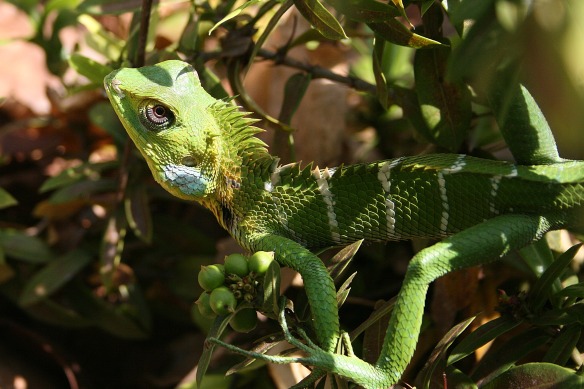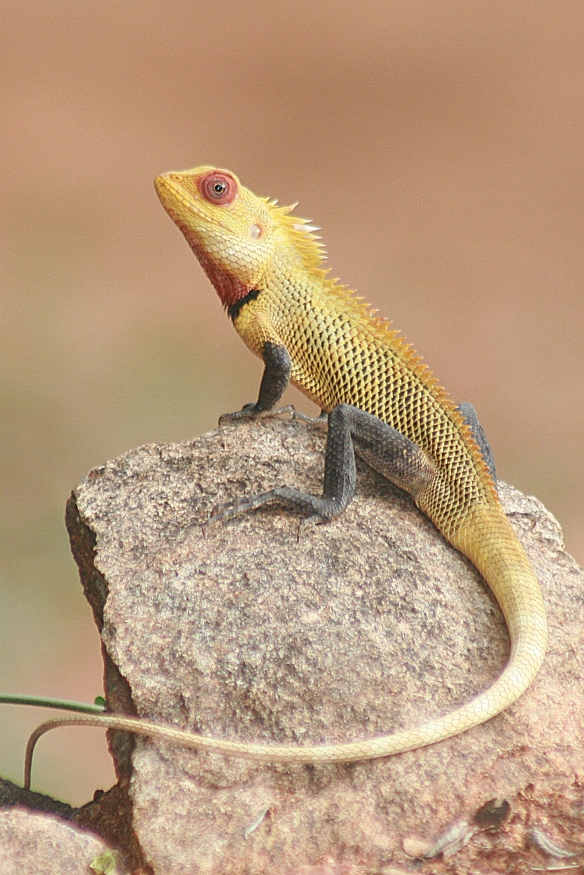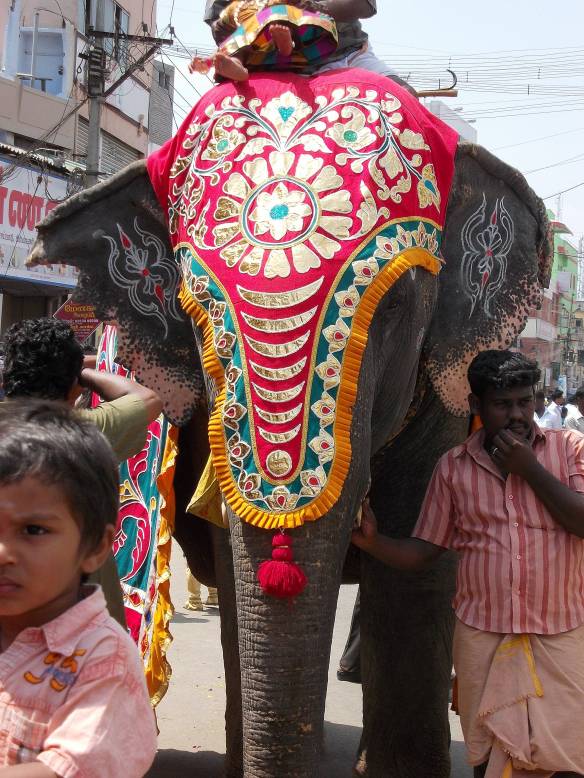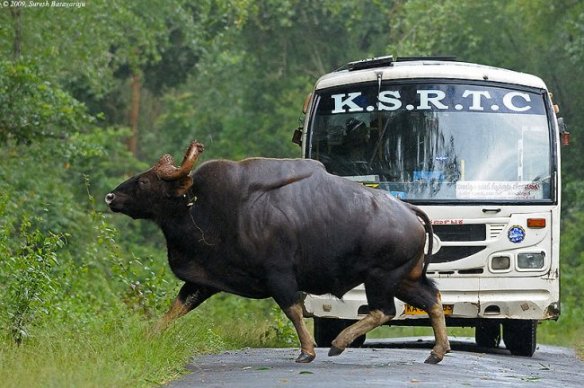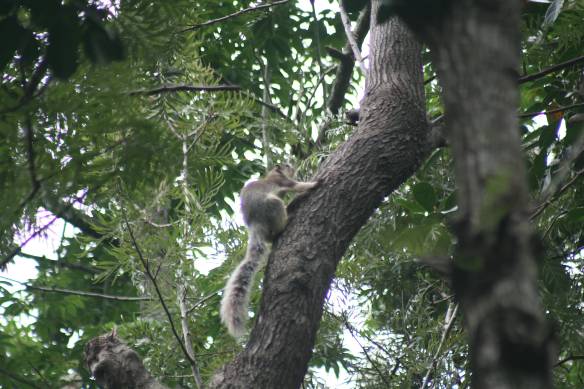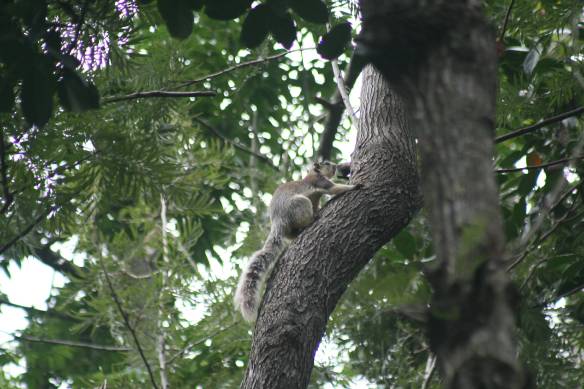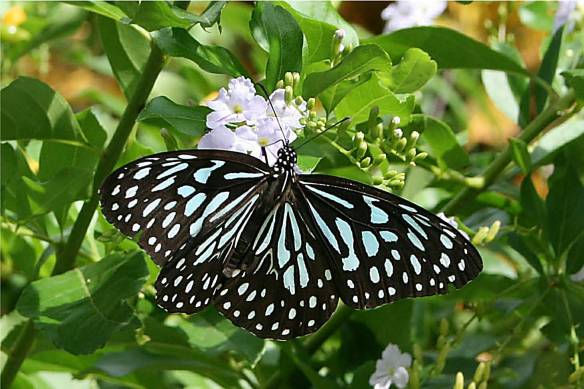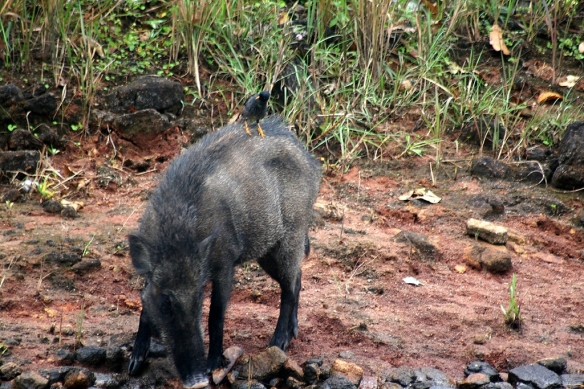 While walking in our area of land set aside for wildlife this morning I met a local family.
While walking in our area of land set aside for wildlife this morning I met a local family.
Mum, Dad and baby wild boar were happily rooting away for breakfast. Although I wondered why they would be hungry after digging up some of the plants in our gardens last night!
Unlike boar that you might find elsewhere, these are not aggressive unless they feel threatened. On seeing (even hearing or smelling!) humans, they take off into the densest vegetation they can find. I always feel privileged to see them, but do wish they would not run away and hide before I can take a photo! Thankfully I have one that I took a few years ago. This photo was taken just after the dry season and before the new growth had come through. As you can see, this animal looked hungry. The boar I saw today were much better fed!
Boar can be a bit of a pest. Once Lakeside has settled for the night and no one is around they will come in and dig up the succulent roots of plants. It is just bad luck that the tastiest roots are those of the plants in our flowerbeds and not weeds!
You may see a lone boar (males tend to be solitary) or a pair. If really lucky you could see mum and dad with a family of little ones! Young boar stay with their mother until they are adult. In some places you can see as many as 20 boar in a group, although in this valley you are more likely to see less than 10.
The wild boar is the ancestor of the domestic pig and the two species will inter-breed. So, any feral pigs you may see on rubbish heaps on the outskirts of villages could well have some boar blood.
Boars forage mostly at dawn and dusk and into the night so you are unlikely to see them during the heat of the day. They are omnivorous and will eat anything they find – grass, nuts, berries, carrion, roots and tubers, insects and small reptiles. They are also a menace for our ground-nesting birds as they will take both the bird and the eggs.
As the boar is one of the bigger mammals in the valley they don’t have many predators. A fox or local dog may take a piglet, but only the leopard will take on a full grown boar.


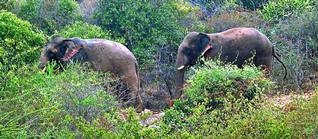 The drought is really taking hold.
The drought is really taking hold.